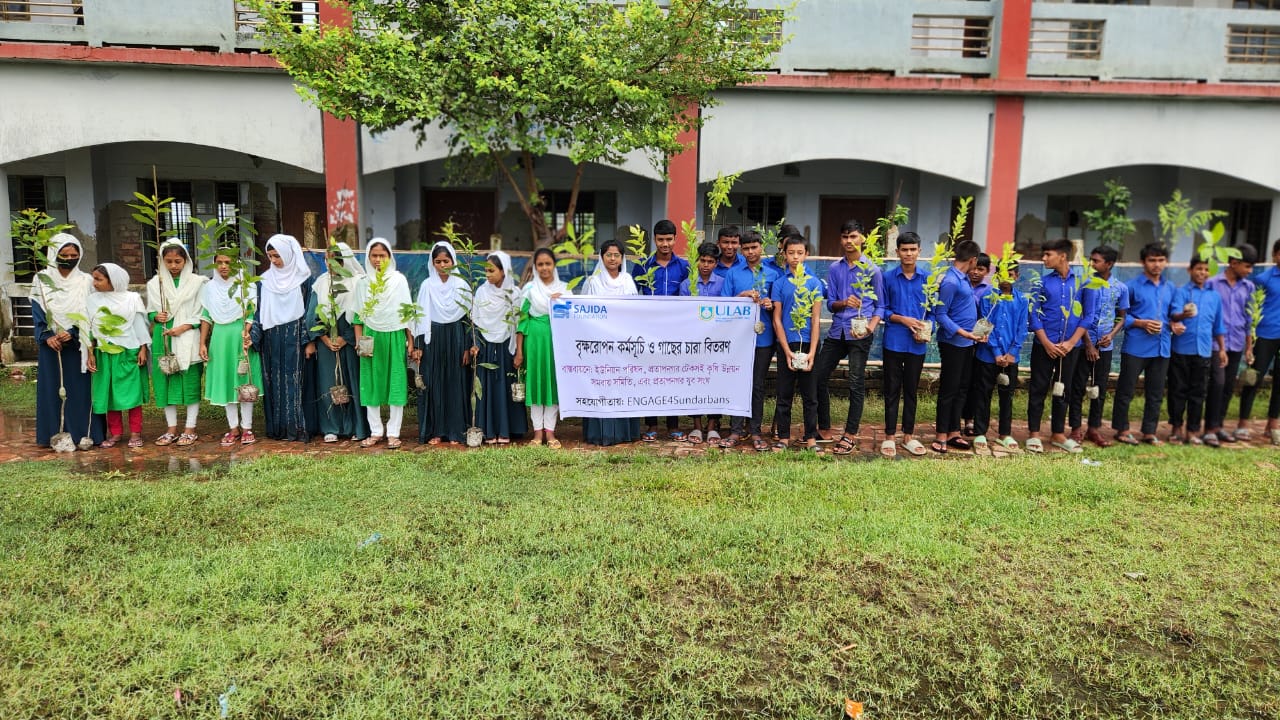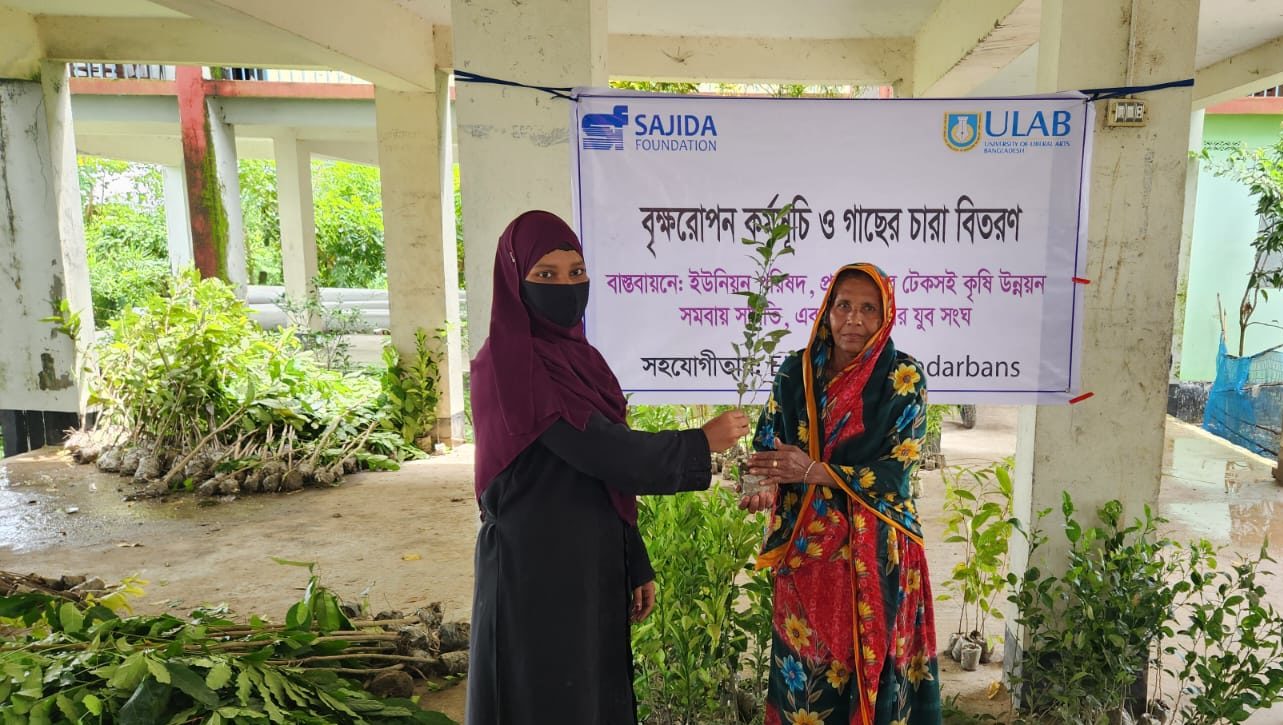There was a time when the villages of Protapnagar Union were famous for its greenery and fruit orchards. Towering palm trees lined the narrow paths, wood apple, mango orchards thrived near homesteads. Children played in the shade of banyans that had stood for generations. For many elders in the community, those memories are still vivid, a time when the land was fertile, the rivers gentle, and every household had at least a few fruit trees providing both food and shade.
Over the years, however, the landscape has changed drastically due to changing climate. Repeated cyclones, coastal flooding, and increasing salinity have taken a heavy toll on the environment. The big trees are now rare. Orchards have disappeared. Once-productive lands are now dry or saline. Local biodiversity has declined, and many livelihoods have been affected. Still, the memory of the greener past lives on in the words of senior citizens, who speak of it not just with sadness, but with a hope that one day, the land might heal again.

On 6 August 2025, the first step was taken to make that hope a reality. Engage4Sundarbans, in collaboration with the Union Council, Farmers’ Association, and youth groups, organised a large-scale native tree planting and re-greening campaign at Protapnagar. This community-driven initiative aimed to restore some of the lost greenery and strengthen the region’s climate resilience.
The activity was designed to foster local ownership and participation. Saplings were distributed through schools, the Union Council office, and other community channels. Farmers, students, local leaders, and volunteers came together to plant over 1,000 saplings of native tree species, including Blackboard tree, Black Plum, Tamarind, Wood Apple, Neem, and Banyan.

These native species were selected because they are well-suited to the local climate and soil conditions. They contribute to soil health, retain water, support local wildlife, and are more resilient to salinity and extreme weather. In addition to their ecological value, these trees offer long-term benefits to local livelihoods through fruit production and environmental protection.
The re-greening effort is part of a broader climate adaptation strategy. Restoring tree cover helps reduce erosion, improve air quality, and create natural barriers against cyclones and floods. It also supports the return of native biodiversity, which is critical for maintaining ecological balance.

For many local residents, especially the older generation, the event was a meaningful reminder of what the area used to be and a hopeful step toward what it could become again. The participation of young people alongside elders highlighted the shared responsibility and intergenerational commitment to protecting the environment.
Engage4Sundarbans will continue to support the care and monitoring of the planted areas, working closely with local partners to ensure survival and growth. This initiative reflects the power of community-led action and the belief that with sustained effort, degraded landscapes can be revived.
